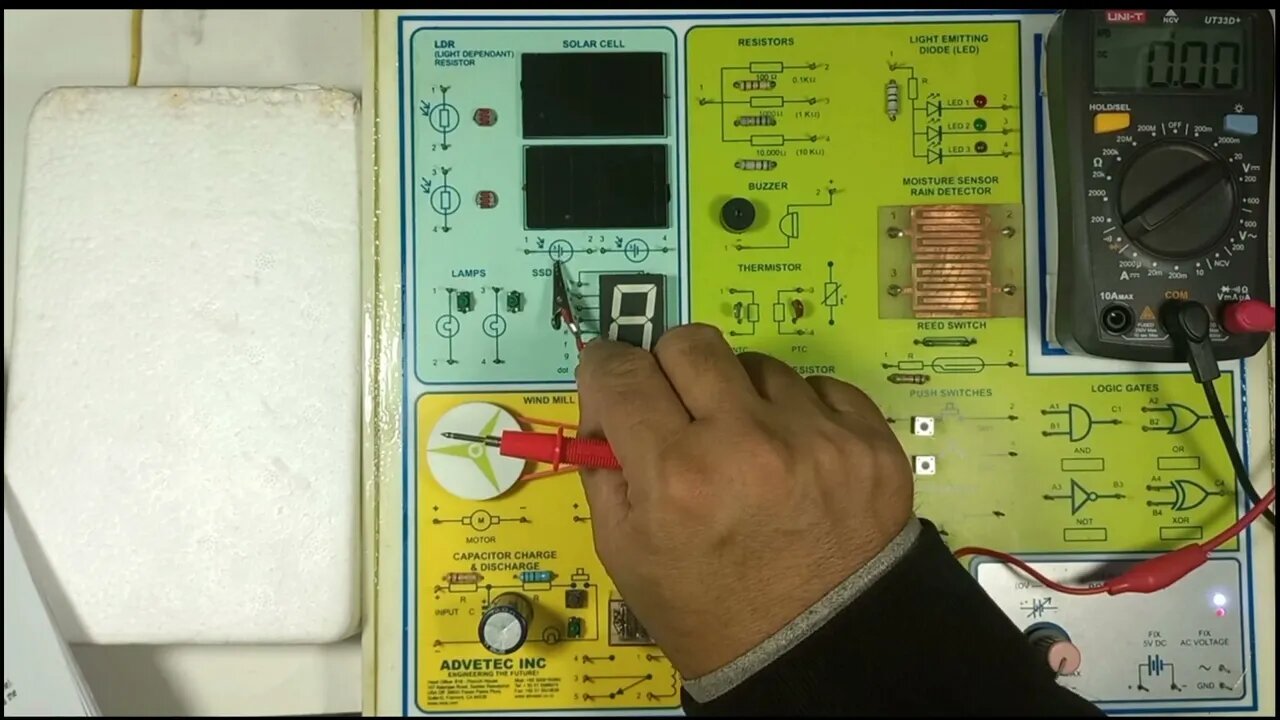Premium Only Content

Voltage measurement of solar cell II Measure voltage of solar cell II Solar cell definition
Voltage Measurement of a Solar Cell:
Measuring the voltage of a solar cell is a crucial step in assessing its performance and determining its output potential. A solar cell, also known as a photovoltaic cell, generates electrical voltage when exposed to sunlight. To measure the voltage of a solar cell, follow these steps:
1. Setup: Ensure the solar cell is exposed to an adequate amount of sunlight. Natural sunlight or a consistent light source is typically used for accurate measurements.
2. Connect a Voltmeter: Use a digital voltmeter (DVM) or a multimeter set to the voltage (V) measurement mode. Make sure the voltmeter is properly calibrated and can handle the expected voltage range.
3. Probe Connection: Connect the voltmeter's probes to the terminals of the solar cell. The positive (red) probe goes to the positive terminal, and the negative (black) probe goes to the negative terminal.
4. Read the Voltage: The voltmeter will display the voltage generated by the solar cell. Solar cell voltages can vary widely depending on factors like the intensity of sunlight, the type of solar cell, and its condition. Record the voltage reading.
5. Consider Load Conditions: Keep in mind that the voltage reading may change when the solar cell is connected to a load, such as a battery or an electrical circuit. The voltage measurement without a load is often referred to as the open-circuit voltage (Voc), while the voltage under load is the operating voltage (Vmp).
Solar Cell Definition:
A solar cell, also known as a photovoltaic cell, is a semiconductor device that converts sunlight into electricity through the photovoltaic effect. It is a fundamental building block of solar panels and solar arrays used to harness solar energy for various applications. Here's a concise definition of a solar cell:
Solar Cell (Photovoltaic Cell): A solar cell is a semiconductor device that converts sunlight directly into electrical energy. When exposed to photons from sunlight, solar cells generate a flow of electrons, creating an electric current. Solar cells are the primary components of solar panels and are widely used to capture and convert solar energy into electricity for residential, commercial, and industrial purposes, as well as for powering remote devices and spacecraft. The electricity produced by solar cells is clean, renewable, and sustainable, making solar energy an important part of the global transition to cleaner energy sources.
song :"Art of Silence - by Uniq"
-
 DVR
DVR
Savanah Hernandez
1 hour agoEXPOSED: FBI destroys evidence as NSA’s LGBTQ sex chats get leaked?!
29.8K4 -
 LIVE
LIVE
Revenge of the Cis
3 hours agoEpisode 1452: Hindsight
1,435 watching -
 1:20:35
1:20:35
Awaken With JP
5 hours agoCrenshaw Threatens to Kill Tucker and Other Wild Happenings - LIES Ep 80
66.4K44 -
 1:32:19
1:32:19
Russell Brand
4 hours agoBREAK BREAD EP. 15 - LECRAE
88.1K8 -
 1:37:26
1:37:26
The Officer Tatum
4 hours agoLIVE Rachel Maddow, Don Lemon MELTDOWN Over Joy Reid's FIRING! + More Ep 68
58K25 -
 1:11:24
1:11:24
The Gateway Pundit
2 hours agoEpstein & JFK Files BLOCKED: Luna’s SHOCKING Clash with Pam Bondi! | Elijah Schaffer & Jim Hoft
96K24 -
 LIVE
LIVE
John Crump Live
7 hours ago $0.20 earnedFake Gun Advocates.
88 watching -
![[Ep 616] Colony Ridge History & Raids | Guest: Elsa Kurt | Crenshaw Unhinged – Wants to Kill Tucker](https://1a-1791.com/video/fwe1/4d/s8/1/K/3/M/j/K3Mjy.0kob-small-Ep-616-Colony-Ridge-History.jpg) LIVE
LIVE
The Nunn Report - w/ Dan Nunn
2 hours ago[Ep 616] Colony Ridge History & Raids | Guest: Elsa Kurt | Crenshaw Unhinged – Wants to Kill Tucker
234 watching -
 2:03:21
2:03:21
The Quartering
5 hours agoDan Crenshaw Hot Mic Threat, Jake Paul Endorses Vivek, and Kathleen Kennedy Leaves Lucasfilm
71.9K27 -
 5:10:45
5:10:45
Viss
7 hours ago🔴LIVE - Precision Guided & Strategic PUBG Tactics!
28.9K2